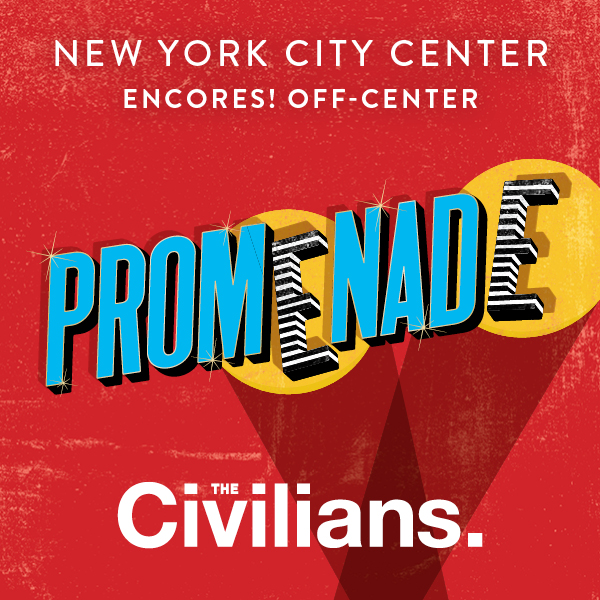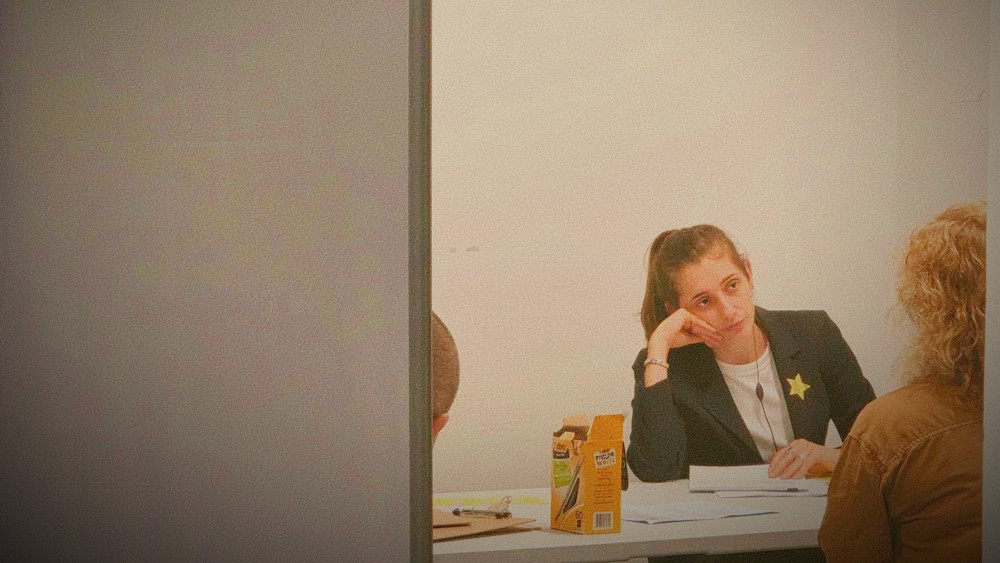April 29, 1996, Jonathan Larson’s “Rent” opened on Broadway, a few months after the death of its composer. It has become the dominant AIDS narrative in musical theater, although opinions on its merits and legacy differ wildly. To its advocates, “Rent” brought queer characters to the mainstream and gave marginalized populations a cultural touchstone. Others critics point out that Larson was a straight man whose tragic death had nothing to do with AIDS and claim his representation of early-90s East Village bohemia is inauthentic at best and plagiarized at worst.
This week, we are publishing conversations with artists whose work informed or descends from “Rent” to various extents. In doing so, we delve into who has the right to tell what stories.
Today, on the 20th anniversary of the Broadway opening of “Rent,” we are publishing the first part of a conversation Extended Play’s Tommy O’Malley facilitated between Sarah Schulman and Chris Tyler. Schulman argues that Larson knowingly lifted characters and plot from her novel “People in Trouble,” which she documents in her 1998 book “Stage Struck.” This weekend, Tyler is producing a performance piece inspired by the legacy of “Rent” and Schulman’s work. This is the first time Schulman and Tyler ever spoke. Read the second part of their conversation here.
TOMMY O’MALLEY: The way that this came about was that Chris participated in a cabaret we did recently, and after the cabaret, I said, “What are you doing next?” Chris told me that he was working on a piece about “Rent,” and I said, “Have you read Sarah Schulman?” His eyes lit up, and he said, “Yes I have.” And so I’ll kind of let you take it from there, Chris, because I don’t want misrepresent the piece.
CHRIS TYLER: Yeah, this is a project that I thought up two years ago now. I was just coming off a lot of moments of overexposure… And this was met with a number of other professional disappointments with residencies and things, and I just went into this dark spiral thinking about what it means to be making things that are in opposition to power structures in New York and that attempt to engage with dominant culture in a way that is meant to undermine it on some level. And I was like, well what’s the thing that’s sort of punk or edgy but that everyone likes and can rally behind, and so the answer to that was the musical “Rent.” And I’m friends with Dan Fishback.”
SARAH SCHULMAN: Right, we’re good friends.
CHRIS: And he was like, “You have to read ‘Stagestruck.’ This will address a lot of the anxieties and frustrations that you’re feeling right now.” And I read it and I was like, “Ahh, okay, I see that there’s a lot more at play in this thing and in the way that this thing has become popular.”
TOMMY: What were those frustrations that you were experiencing?
CHRIS: I felt like everything I was presenting was being consumed and described as either crazy or insane or funny. It felt like there wasn’t a deeper level of engagement happening, and I felt lost within that sea of reception and also not able to articulate why I was feeling lost in it. It was like, when it was happening in bars within the queer nightlife space it was extremely popular and people were really engaged with the thing, and when it was happening elsewhere, it was met with disdain and confusion, and so I wanted to better understand that divide. I had read “Gentrification of the Mind,” and that was percolating, and then I went to “Stagestruck,” and then I read “People in Trouble,” and I just started to slowly piece together the ways in which the theater culture is very much one invested in maintaining a certain kind of sociopolitical ideal that doesn’t really want to engage with queerness or any ulterior lived experience or political message that isn’t reinforcing a status quo.
SARAH: Well, I would agree with the first statement, but not the second, in that I think what you’re calling queerness is very acceptable. You know, because of what’s been happening recently, like it’s just not a radical category.
TOMMY: Are you talking about, like, homonationalism after gay rights?
SARAH: Everything. You know, I have this friend who’s a Civil War historian, Martha Boltz, and she was explaining to me that after the Civil War, there was this period that’s called White Reconciliation, where the white people from the North and white people from the South realized they were going to have to get together if they wanted to maintain white supremacy as the two sides reunited. So they started having all these events with veterans from the Confederacy and veterans from the Union getting together and having barbecues. But there were no black people there. And that’s kind of what’s happened with gay people recently. There’s been a reconciliation of the white race around gay rights. So whereas white queer people used to be thrown out of their families or thrown out of their towns or pushed out of their class or whatever, now they’re welcomed back in. So now you’ll see, you know, if you have a partner, if you have children especially, now there’s more going to family events, returning to the family and being part of whiteness. And also accompanying that is being part of the state apparatus and the military and all of that, and there’s really nothing radical in queerness — certainly in the way that it connects with whiteness in our moment. So I would agree with the first statement. I think the theater is the most conservative art form; I’ve worked in a lot of different forms. Because it’s not a mass art form, it’s an elite art form. It has a small audience, and those theaters just need to sell those same seats. They have those subscribers, and they don’t care about expanding who they serve. They’re not looking to sell three hundred thousand seats. I’m not talking about Broadway, but the kind of theater that we’re involved in. So they don’t really care. They don’t feel like they have a responsibility to represent or to make things available. So it’s very, very conservative — more conservative than everything, more even than television. But I don’t think queerness is something that the theater doesn’t embrace. Especially, I mean especially if it’s in any way connected to family. Like right now, there’s “Fun Home,” “Transparent,” “The Argonauts.” It’s all about family, all that stuff, even “Carol.” You know, in the book she hated her kid, but in the movie she wants to be a better mother, right? I mean, it’s all fitting in. The third thing that you said, that things that are political, I think there’re certain things that they will not allow, and that would be interesting to try to identify — what’s allowable and what’s not.
CHRIS: Right. I guess, I feel like a queerness that is in opposition to the monolith of capital is not a queerness that is necessarily desirable within those contexts.
SARAH: Like what?
CHRIS: I feel like work that’s in opposition to it is, I don’t see as much… I think there is work happening that isn’t funded. It’s happening in places that are further off the beaten path, and it’s obviously not receiving the same kind of press and exposure.
SARAH: Like what? Have you seen something?
CHRIS: I mean I think a lot about all of the drag shows that happened in 2013, 2014 that I was very much a participant in, in that kind of North Brooklyn resurgence. I used to work every week and perform at Bath Salts, and I had my show, and there were a lot of other little things happening all over Williamsburg, Greenpoint, Bushwick that really blew my mind and changed my life in a lot of ways, because it was the first time I’d experienced like a community-based art practice. And it was not one that was, obviously, given any kind of exposure or funding by cultural institutions. I feel like more recently I haven’t seen as much, but I think also that has to do with me kind of taking a step away from that orbit and working at an arts institution so more of my time is spent looking at art like that, and I feel a difference between those two things.
SARAH: Okay.
TOMMY: I have a question for Sarah, since we’re kind of talking about representation. You’ve talked about the late-1990s being kind of overwhelmed with straightness, because an entire generation of queers had died.
SARAH: Gentrification, yeah.
GENTRIFICATION OF THE MIND Sarah Schulman and Penny Arcade: A Lower East Side Biography Project Program from Steve Zehentner on Vimeo.
TOMMY: In the decade and a half since then, have you seen that queer energy replenished in any sphere?
SARAH: Yeah, there’s a lot of it, but I’m not sure how radical it is. I mean, there’s, we call them the MIX kids, right? The thousand people that come to MIX every year who are in their 20s, who travel across the country or from other countries for MIX. And there are a lot of great things about them. I like their values, but I don’t see that much aesthetically or artistically that I would say I hadn’t seen before. It doesn’t mean that I don’t enjoy it, I do. I just don’t, I’m not sure queer is where it’s at, really.
TOMMY: So where is that?
SARAH: Where is queerness living in a radical way in America? It was interesting, you know, Black Lives Matter was started by three queer women. And so now there’s two black movements in America — Black Lives Matter and the Black Student Movement. And the Black Student Movement has a lot of queer content. When you look at people’s demands and listen to the student leaders speaking, they’re talking about queer people… I was recently at a national conference of organizations that support Palestine. And they put me on a panel, a solidarity panel, so it was me, someone from Black Lives Matter, someone from the DREAMers and a kid from Palestine Youth. And I was there as the gay person. And the three kids, who were kids of color, I shouldn’t be calling them kids, but I could have given birth to them, let’s say that — they were bending over backwards to show how pro-queer they were, and especially how pro-trans they were. So here you have these movements, that queer is very alive in those movements, and queer people are welcome in those movements. So maybe that’s the radical place where queer lives. Maybe this separate white queer sphere has really been co-opted at this point, legally and aesthetically. You know, and I’m still part of that community — I always will be and I enjoy it — but I don’t think that it’s pushing the culture forward in the way that queer aesthetics of politics did in previous decades. So maybe the thing you’re trying to answer is because it itself cannot be radical, because it’s a construction that’s no longer radical.
CHRIS: Right. I think that that’s very much a fixation of mine in the work that I make, looking at the limitations of whiteness within countercultural narratives, and why it feels like as soon as we get x, y and z, we’re just no longer engaged with what else is going on in the world.
SARAH: Yeah, the sad lesson is that for most people, they’re only taking an oppositional position because of their own condition. And as soon as their obstacle is resolved, then they’re fine with the structure, they don’t care if somebody else is being marginalized. And that’s what we’re seeing happening to white queers. That’s what happened, it already happened, it’s not happening, it’s in place. There are people that do have values larger than themselves and they’re still involved in a lot of ways, but.
TOMMY: So how does a white queer artist fight that in their art?
SARAH: Get into a community that you’re uncomfortable in, and where you have to listen to other people, and where you’re not determining the agenda.
TOMMY: Can the queer authorial voice represent other cultures in their art?
SARAH: I try to do that, but it takes a lot of work. My new novel has two protagonists, one’s white and one’s black, and so people have been asking me about that.
TOMMY: This is “The Cosmopolitans.”
SARAH: Yeah. And I’ve been trying to figure out how to do that my whole life. Like my very first book in 1984, I have an Asian character, I think it was the first Asian gay character in any novel, any modern novel, lesbian character in it — but I mean, I’ve been trying since the beginning, and I’ve made so many mistakes. I mean, I fucked up representational issues so many times over these gazillion years, I don’t even know how many years it is since 1984. But this one is good. This one I feel I understand something. So, it takes a lot of work.
TOMMY: What did you fuck up? And what do you understand now?
SARAH: Okay, so the biggest fuckup — there are many — but the biggest one was this novel I published in ’98 called “Shimmer.” Had two black protagonists, a man and a woman, and it also had some white protagonists. And one of the woman’s subthemes was that she thought that she was discovering that her grandmother was white, and it bothered her. And Jacquline Woodson, who is the National Book Award-winning author of many amazing children’s books, read it and was like, “Schulman, this is a disaster, because that’s a white anxiety — that you have black ancestors. That’s not a black anxiety.” And I was like, okay. So I learned the hard way. I’ve refined my methods. Some of it is work, like reading work by writers from other experiences, being very familiar with who the writers are, who the artists are. Going to see the work, you know, really being up to date on what’s being expressed and what’s being grappled with. Listening to the people around you. I teach in a city university. I have 16 nationalities in my classroom. I’m in an extremely mixed environment, and my personal life is very, very mixed. So I have a lot of exposure on a lot of levels… But then there’s also like magic. One of my favorite writers is Carson McCullers, and she published “The Heart is a Lonely Hunter” when she was 23, in 1940. And Richard Wright, the black novelist, reviewed it and said it was the first novel by a white writer in which black characters were fully human. Now she has scenes where there’s only black people in the room, she has scenes where there’s an argument inside a black family. And she grew up in segregated Georgia. So how, at age 23, was she able to do this in such a way that Richard Wright felt was appropriate? And that has to do with something that’s very deep. That’s not something you can study, right? There’s all those elements that are involved. So I think it is possible. Obviously I’ve been striving towards it, but I think it’s not just automatic. It’s not about will, let’s put it that way.
TOMMY: So speaking of representation, let’s bring this back to the discussion of “Rent.” Chris, what was your relationship to “Rent” growing up? Let’s just start there.
CHRIS: Well it’s just like, I was recently having a conversation with someone who said that the music is basically like Catholic mass. Like it’s this thing that I can hear three notes and I know exactly what’s coming and I can recite the lyrics verbatim. Because when you grow up in the tri-state suburbs as a theater kid, it’s all you’re hearing. And I wasn’t even so into it until that terrible movie came out, and I don’t quite know why that is.
SARAH: The “Rent” movie?
CHRIS: Yeah.
SARAH: How old were you?
CHRIS: I’m 27 now. I saw the show when I was 14 but I really didn’t care for it. I was definitely accustomed to a more polished, spectacular Broadway presentation than that production offered. But then the movie came out and I think something about the polish of the movie was very appealing to me in my suburban sensibility, and so that was the soundtrack that I got really into and would listen to on repeat. But it’s the kind of thing that you, you’re listening to and you don’t really know what it’s about, but you’re completely internalizing it, and you’re able to recite it, but there’s no context for the information.
SARAH: Because it’s branded to you.
CHRIS: Yes. Exactly.
TOMMY: Meaning a suburbanite?
SARAH: Yeah in every way.
TOMMY: Did it inform in any sense your perception of your own queerness, Chris?
CHRIS: I don’t think so. I think if anything I identified with Mark more than anyone else, who is straight but that’s debatable. I think what it did most palpably was create this kind of Disneyland version of New York Bohemia in my mind. And I don’t think that’s unrelated to my choice, after college, to move here.
SARAH: Mmhm.
CHRIS: I think that was always lingering. As a space of possibility. And one in which queerness was possible. But I also went through all of my adolescence as very interested in a kind of normative gay relationship and not questioning any kind of power structure or system of oppression. Just sort of like, getting mine.
SARAH: It’s interesting because I learned from seeing how Israel marketed itself that the most influential demographic in the world is men ages 18 to 24, so anything that men ages 18 to 24 want or believe becomes reality. And when they were rebranding Israel, Saatchi & Saatchi knew this, and so they deliberately aimed the rebrand at that demographic. And then they refined it to gay men, because they had the discretionary income that some straight men didn’t have. And so gay men in that age group are really the most powerful and influential cultural demographic. So if Rent is designed for you, and you are that demographic, then it becomes de facto reality. However, I would disclaim that if he hadn’t died on opening night, you never would have heard of Rent…. But let me ask you this — if you’re the perfect demographic to change the world, and what you like and think is important, becomes reality — now that you’re making a piece about Rent, are you enhancing that?
CHRIS: Possibly. I mean, my hope is to make the thing stranger, and to complicate the thing. To throw a wrench into the machine, basically.
TOMMY: How are you using Sarah’s work to do that?
CHRIS: I mean, I would say that your writing has permeated my soul.
SARAH: Thank you.
CHRIS: And it’s been a thing that sits with me as I move through the world and complicates things in a way that is not always easy, and is often very frustrating and I feel is deeply necessary… I think it’s really interesting to take the thing and undo it or use pieces of it to work against the larger cultural effect it can have — to take this kind of situationist détournement and use the mechanisms of capital to kind of like reflect back and expose the media culture.
SARAH: That’s hard because you are a very branded person, I mean the suburb you grew up in is branded, the Ivy League school you went to is branded, I mean you were talking about– I mean there’s a lot there to undo. You were talking about the funding and, you know, the problem of corporate funding. But I think it’s much earlier because people are tracked toward that funding by being born in those suburbs and going to those schools. And that’s, you know, that’s– anyway, that’s also really interesting, how deeply, I mean, when were you set up for that after party? Was it when your parents decided to move to that suburb, because of the school system? And I mean, that’s not a criticism, there’s nothing to do. But it’s something.
CHRIS: It’s a thing that I think about a lot, and I don’t know.
SARAH: You have to go all the way, yeah.
Authors
-

Tommy O'Malley is a Brooklyn-based writer and performer. He is a former Artistic Associate at the Civilians. He produces the storytelling show Big City Stories in Brooklyn and Manhattan. He regularly appears on the podcast "Race Wars," hosted by Kurt Metzger and Sherrod Small, and co-hosts its spin-off podcast "Unhireable" with comic Keren Margolis.
View all posts -

Chris Tyler is a performing artist examining the intersections of popular culture and contemporary identity. A graduate of Brown University, he has shown original performance at the Under the Radar Festival, Prelude, Taylor Swift's apartment, and gay bars all over Brooklyn.
View all posts -

Sarah Schulman was born in New York City in 1958 and attended (High College) Hunter High School. She is a novelist, playwright, screenwriter, nonfiction writer, AIDS historian, journalist, and active participant citizen.
View all posts










